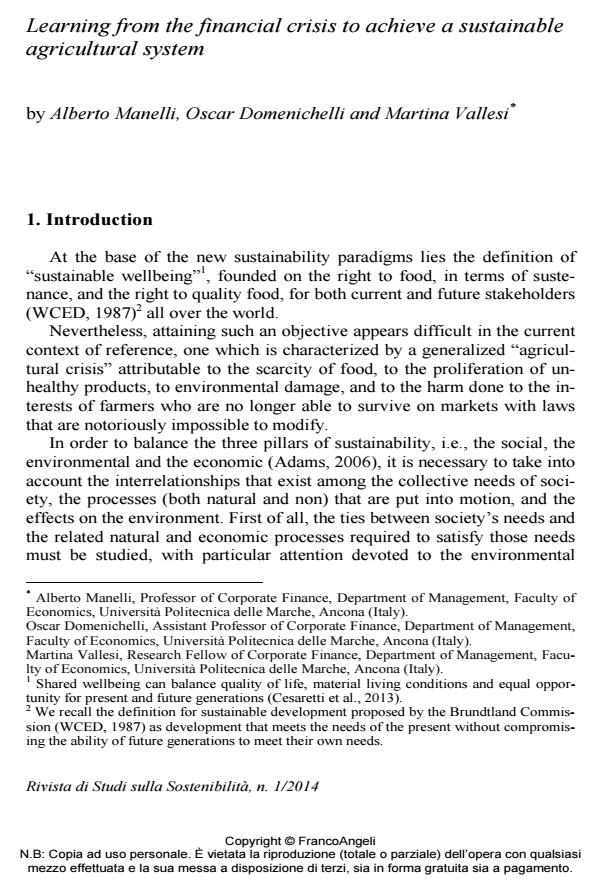Learning from the financial crisis to achieve a sustainable agricultural system
Titolo Rivista RIVISTA DI STUDI SULLA SOSTENIBILITA'
Autori/Curatori Alberto Manelli, Oscar Domenichelli, Martina Vallesi
Anno di pubblicazione 2014 Fascicolo 2014/1
Lingua Inglese Numero pagine 33 P. 45-77 Dimensione file 342 KB
DOI 10.3280/RISS2014-001005
Il DOI è il codice a barre della proprietà intellettuale: per saperne di più
clicca qui
Qui sotto puoi vedere in anteprima la prima pagina di questo articolo.
Se questo articolo ti interessa, lo puoi acquistare (e scaricare in formato pdf) seguendo le facili indicazioni per acquistare il download credit. Acquista Download Credits per scaricare questo Articolo in formato PDF

FrancoAngeli è membro della Publishers International Linking Association, Inc (PILA)associazione indipendente e non profit per facilitare (attraverso i servizi tecnologici implementati da CrossRef.org) l’accesso degli studiosi ai contenuti digitali nelle pubblicazioni professionali e scientifiche
The current agricultural crisis has to do with the scarcity and poor quality of food, along with problems related to consumer health issues and environmental damage. In light of this situation, there is an urgent need to build sustainable systems capable of balancing social, environmental and economic needs in the long term. In order to implement these systems, lessons can be learned from the corrective measures adopted in previous crises, particularly in the financial one, and applied to the current dynamics of the agricultural market under scrutiny. Based on this study, the paper illustrates possible forms of government intervention to would allow the rise of responsible systems that would satisfy the demand for food (primary need) through an adequate supply and would allow resources to be transferred effectively and efficiently.
Parole chiave:Sustainable agricultural system, agricultural crisis, agricultural market, financial crisis, financial market, government intervention
- New Paradigms for a Sustainable Well-Being Alberto Manelli, in RIVISTA DI STUDI SULLA SOSTENIBILITA' 2/2014 pp.11
DOI: 10.3280/RISS2014-002002 - New Paradigms for a Sustainable Well-Being Alberto Manelli, in Agriculture and Agricultural Science Procedia /2016 pp.617
DOI: 10.1016/j.aaspro.2016.02.084
Alberto Manelli, Oscar Domenichelli, Martina Vallesi, Learning from the financial crisis to achieve a sustainable agricultural system in "RIVISTA DI STUDI SULLA SOSTENIBILITA'" 1/2014, pp 45-77, DOI: 10.3280/RISS2014-001005